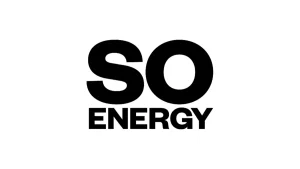Compare EV Tariffs 2024
Compare Energy Tariffs for Electric Car Owners
Comparing the best EV tariffs can save you hundreds of pounds annually. By taking advantage of off-peak charging times that suit your lifestyle, you can significantly reduce your energy costs.
Find the right EV tariff for your and learn more from our guide below.
Best EV Tariffs 2024
*EV tariffs vary by slightly location and change rapidly. We take a sample price at time of publishing but get a quote with each provider your price.
Standing Charge
Peak Rate
Off-Peak Hours
Off-Peak Rate
Standing Charge
Peak Rate
Off-Peak Hours
Off-Peak Rate
Standing Charge
Peak Rate
Off-Peak Hours
Off-Peak Rate
Best Off Peak EV Tariffs 2024
For EV owners who have the flexibility to charge during off-peak hours, there are substantial savings opportunities available on their charging costs. In today’s market, an off-peak rate below 8p/kWh is considered highly competitive and categorised as a ‘cheap’ option. Several EV tariffs currently meet this criteria, making them excellent choices for those who can adapt their charging schedule to take advantage of these lower rates during specific time periods.
Standing Charge
Peak Rate
Off-Peak Hours
Off-Peak Rate
Standing Charge
Peak Rate
Off-Peak Hours
Off-Peak Rate
Standing Charge
Peak Rate
Off-Peak Hours
Off-Peak Rate
Longest Off Peak Hours EV Tariffs 2024
For EV owners whose charging times are inconsistent and who cannot always charge their vehicles at home within a restricted time frame, there are specific tariffs that cater to this level of flexibility. These tariffs offer extended off-peak hours, providing a wider window for charging your EV at a lower rate.
By opting for a tariff with longer off-peak hours, you can enjoy greater adaptability in your charging schedule. This is particularly beneficial for those with unpredictable routines or who may need to charge their EVs at different times throughout the day or night. With these tariffs, you have the freedom to plug in your vehicle whenever it’s most convenient for you, without being constrained by a narrow off-peak timeframe
Standing Charge
Peak Rate
Off-Peak Hours
Off-Peak Rate
Standing Charge
Peak Rate
Off-Peak Hours
Off-Peak Rate
Standing Charge
Peak Rate
Off-Peak Hours
Off-Peak Rate
Standing Charge
Peak Rate
Off-Peak Hours
Off-Peak Rate
Standing Charge
Peak Rate
Off-Peak Hours
Off-Peak Rate
Standing Charge
Peak Rate
Off-Peak Hours
Off-Peak Rate
Standing Charge
Peak Rate
Off-Peak Hours
Off-Peak Rate
Standing Charge
Peak Rate
Off-Peak Hours
Off-Peak Rate
Octopus Energy EV Tariffs 2024
Octopus Energy has established itself as a leading provider of energy tariffs, particularly for electric vehicle (EV) owners, and has garnered a significant following among UK households.
Recognising the unique energy requirements of EV owners, Octopus Energy has crafted a range of bespoke tariffs tailored to their needs. One such offering is Octopus Go, which presents a compelling solution for those seeking to charge their EVs economically and sustainably.
Standing Charge
Peak Rate
Off-Peak Hours
Off-Peak Rate
Standing Charge
Peak Rate
Off-Peak Hours
Off-Peak Rate
JUMP TO
EV Tariffs - HOW TO FIND THE BEST DEALS IN 2024
Best EV Tariffs 2024 – Everything you need to know
Best EV tariffs are for people who own electric cars and want to optimise their charging costs. They have specific rates at different times of the day, especially off-peak hours, so you save money.
What are EV Tariffs?
EV tariffs are special energy plans for charging electric cars. To switch to an EV tariff start by assessing your charging needs, compare tariffs and understand the eligibility criteria. These tariffs have lower rates off-peak which is usually at night. By charging your car during these times you can get cheaper electricity. For example E.ON Next have the Next Drive tariff which has cheaper rates between midnight and 7am.
You don’t need to own an electric car to get some tariffs but best savings are achieved by those who charge their EVs overnight. This flexibility also encourages users to manage their energy consumption better.
Types of EV Tariffs
There are several types of EV tariffs, each for different needs. Two-rate tariffs have peak and off-peak hours, with much lower rates off-peak compared to peak prices. Time-of-use tariffs charge less during specific times, so night-time charging. Octopus Energy have options like Go, Agile and Intelligent tariffs to suit different preferences. These plans can have fixed or variable rates.
Some providers like Ecotricity offer tariffs regardless of EV ownership and recommend to use them at night. OVO Energy say you can save a lot compared to conventional fuels so these tariffs are great for budget conscious users. Depending on your driving habits you can save a lot by choosing the right EV tariff.
How EV Tariffs Work
EV tariffs are designed for electric vehicle owners to charge their cars at home. They work like Economy 7 and time-of-use (TOU) tariffs, offering discounted electricity unit rates for charging your car off-peak, usually at night. The cheaper unit rates apply to all electricity usage off-peak so you save on household activities like washing machine or dishwasher.
EV tariffs usually have a two-rate structure, lower rate off-peak and higher rate peak. The rates and hours vary depending on the energy supplier and the tariff. Some EV tariffs may have a single rate structure with the same price all day. To get an EV tariff you’ll need a smart meter and to be able to prove you own an electric vehicle. Some suppliers may also require you to be an existing customer or have a specific type of charger. By understanding how they work you can make informed decisions to optimise your charging costs and overall energy consumption.
EV Charging Basics
EV charging is about understanding the difference between home and public charging and how smart meters improve the charging experience. Knowing these basics will help you get the most out of your electric vehicle.
Home Charging vs Public Charging
Home charging is usually the most convenient. Home chargers let you plug in your electric vehicle at home, usually overnight. These chargers have the advantage of cheaper rates especially if you use time-of-use tariffs. Having a home charger means you’ll never have to wait in line at a public charging point.
Public charging is for when you’re on the go. Public chargers come in different types, fast chargers and rapid chargers. Fast chargers take a few hours, rapid chargers can charge 80% of your battery in around 30 minutes. Check out Zapmap to find these points.
How Smart Meters Help with EV Charging
Smart meters track your energy usage in real-time so you get more accurate billing. When paired with a smart home charging system they allow you to charge off-peak and save you money. You can set your smart meter to charge your car when electricity is cheapest.
These meters can also talk to your electric vehicle to optimise charging times and costs. By integrating with your home’s energy management system smart meters will make your EV charging as efficient as possible, reducing energy consumption and costs. With a system like this you can also use Octopus Electric Vehicles for renewable energy solutions.
Charging Strategies to Save Money
To get the most out of charging your electric vehicle you need to use off-peak hours and choose the right energy tariff for you. These will help you save and charge efficiently.
Off-Peak Hours
Charging off-peak can reduce your electricity bills by a lot. Off-peak is when demand for electricity is low, usually late at night or early in the morning. By charging your EV during these hours you can get cheaper rates.
Many energy suppliers offer specific tariffs like Economy 7 which have lower rates at night time. So you can charge your car overnight at a fraction of the cost of day time rates.
Check with your energy supplier to find out the exact off-peak times. By setting a timer on your EV charger you can make the most of these cheaper periods without having to stay up late to manage your charging.
Choosing the Right Tariff
Choosing the right tariff will help you save even more. Tariffs for EV owners often have lower rates for charging. For example a two-rate tariff has different prices for peak and off-peak hours so you can charge more economically during those times.
When choosing a tariff look for options like Electric Driver v3 or others that have fixed rates with no exit fees if you switch to another fixed tariff. Read the small print to avoid surprises.
Compare EV energy tariffs to find one that matches your usage. Knowing what’s the best option will get you the most savings and the best EV charging experience.
Tariff Types for Electric Vehicles
When looking at tariffs for electric vehicles understanding the different tariff types and what they offer will help you save on charging. Fixed and variable tariffs have their own advantages, EV specific tariffs will save you more and be more convenient.
Fixed vs Variable
Fixed tariffs lock in a price for electricity for a set period, so you know what you’re getting. This is good if you want to avoid price changes or price cap increases. But if market prices drop you won’t get the cheaper rates.
Variable tariffs like the standard variable tariff can change with market conditions. They offer flexibility so you can take advantage of cheaper rates if prices drop. But they can be riskier if prices rise. Both usually have a standing charge which is a daily fee you pay regardless of how much electricity you use.
Choose between fixed and variable depending on what matters most to you. If stability is key then fixed might be best. If you can monitor and adapt to market changes then a variable tariff might be more beneficial.
EV Tariff Benefits
Many suppliers offer EV specific tariffs that are designed to reduce electric car charging costs. These often have lower rates during off-peak hours like the two-rate or time-of-use tariffs on Zapmap. These tariffs will help you charge at the cheapest times and save you money.
EV specific tariffs may also have zero carbon electricity like EDF so you can support greener energy practices. Some of these tariffs come with exclusive offers like discounts on EV chargers. Looking into these options will get you big savings and support for sustainable energy tailored to your EV usage.
EV Tariffs and Price Caps
Variable EV tariffs with dual rate are covered by the Ofgem energy price cap which sets a maximum price per unit of electricity (kWh) that suppliers can charge. The price cap can go up as well as down so there’s uncertainty in your household budget. Fixed EV tariffs are not covered by the price cap so you get a fixed rate for a set period of time.
When choosing an EV tariff you need to consider the price cap and how it will affect your bills. Variable EV tariffs offer flexibility and potential savings if prices drop but also come with the risk of price increases. Fixed tariffs give you stability and predictability and shield you from market fluctuations but you might miss out on cheaper rates if prices fall.
Also check the supplier’s terms and conditions to see if there are exit fees or penalties for switching to another tariff. By weighing up the pros and cons of each tariff and the price cap you can choose the best option for you and your budget.
Home EV Charging
Charging your electric car at home is efficient and cost effective. By choosing the right home charger and your charging schedule you can save and have your car ready to go.
Home EV Charger Installation
Installing a home charger involves choosing the right one and a safe installation. EV home chargers come in different charge rates. Faster chargers like a 7 kW unit will charge your car full overnight for most electric vehicles. You should hire a qualified electrician to install to avoid any safety issues.
When choosing a charger consider compatibility with your car and any additional features like Wi-Fi. Brands often offer smart chargers that allow you to monitor charging status from your phone so you have more control over the charging process.
Charging Times and Costs
To save costs charging during off-peak hours is beneficial. Tariffs like GoElectric Overnight have cheaper rates for overnight charging. You can set your charger to start during these lower rate periods and save big on charging.
Charging times can also help extend your battery life as it’s best to avoid full charges as much as possible. Many EV home chargers let you set schedules so you can charge when electricity is cheapest. Charging at home is economical and convenient.
Tariffs and EV Owners
Electric vehicle (EV) tariffs can affect your charging habits and costs. By understanding how they work you can optimise your charging times and save money and be green. The following sections go into that.
Changing Your Charging Habits
Switching to an EV tariff means changing when you charge your car. Many tariffs like the Electric Driver Tariff or the GoElectric Tariff have lower rates during off-peak hours which is usually at night. For example with Octopus Energy you might find charging after midnight is cheaper.
You need to plan your charging schedule, maybe plug in your car before bed to take advantage of these lower rates. It may seem inconvenient at first but changing your charging habits can save you big and be more sustainable.
Saving Money
EV tariffs can save you big, especially if you charge during specified off-peak hours. With rates as low as 8p/kWh these tariffs can be much cheaper than standard electricity rates. For example OVO’s Charge Anytime tariff can bring your per mile cost down to 2p, much cheaper than petrol.
Be aware of standing charges as well. While the per unit rate might be low, daily standing charges can add up to your bill. Look at different plans to see which one suits you best, balancing usage patterns and cost.
Switch to an EV Tariff
Switching to an EV tariff is easy. Here’s a step by step guide to get you started:
Assess Your EV Charging: Work out your charging habits and energy usage to see which EV tariff is best for you.
Compare EV Tariffs: Use price comparison websites or visit energy supplier websites to compare EV tariffs. Look for the best EV electricity tariffs for you.
Check Eligibility: Make sure you meet the eligibility criteria for the new tariff, such as having a smart meter and proof of EV ownership.
Contact Your Current Supplier: Inform your current supplier you want to switch and get any necessary information.
Complete the Switch: Provide the required details to your new supplier and switch.
Make sure you read the small print of your new tariff, including any exit fees or penalties for switching to a different tariff. Follow these steps and you’ll be switching to a more cost effective EV tariff for your charging habits.
EV Tariffs and Electric Cars
As the UK EV market grows the demand for EV tariffs is increasing. Energy suppliers are responding by offering more EV tariffs to suit different needs and charging habits.
Market Insights
UK EV market is expected to grow in the next 5-10 years with 19.1% of new cars being alternative fuel vehicles in 2021. European Alternative Fuels Observatory found out that in 2021 there were 19 cars for every Plugin Electric Vehicle charging point.
Home charging is getting more popular, many EV owners are getting a home charger to charge their car in the most convenient way. An EV tariff is recommended for those getting a home charger to charge their car in the most cost effective way.
As the EV market develops we’ll see more EV tariffs and charging solutions. Energy suppliers will need to respond to changing consumer needs and habits, offering flexible and cost effective solutions for EV owners.
In the future we’ll see more smart charging, tariffs that charge at times of low energy demand and supply. We may also see more partnerships between energy suppliers and car manufacturers to offer bundled packages of EV tariffs and charging solutions.
So the future of EV tariffs and electric cars is bright, the market is growing and we need more solutions. As the UK goes low carbon EV tariffs will be key to getting more electric cars on the road and reducing emissions.












